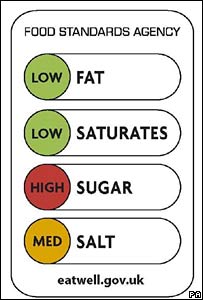In a classic example of government sending the fox off to guard the chickens, Andrew Lansley, Britain’s new health minister has just handed the country’s food industry a gift it cannot refuse. If the industry agrees to pay for the British government’s principal anti-obesity campaign, the government promises that it will impose no new regulations on the industry.
According to The Guardian (UK):
[Lansley] told a conference of public health experts that he wanted a new partnership with food and drink firms. In exchange for a “non-regulatory approach”, the private sector would put up cash to fund the Change4Life campaign to improve diets and boost levels of physical activity among young people…He said business people ‘understand the social responsibility of people having a better lifestyle and they don’t regard that as remotely inconsistent with their long-term commercial interest.”
I posted about the Change4Life program on January 24, 2009. Even then, it was clear that the program was deeply influenced by food industry interests:
British government launched an anti-obesity campaign: The UK government’s Change4Life campaign is designed to promote healthier lifestyles. This is causing much discussion, not least because of its food-industry sponsorship (uh oh). Food companies are said to view the campaign as good for business (uh oh, indeed). The government wants everyone to help with the campaign by putting up posters and such, and its website is cheery. Buried in all of this is some good advice, but most of it is phrased as eat better, not eat less or avoid. That, of course, is why the food industry is willing to fund a campaign which, if successful, could hardly be in the food industry’s best interest.
I asked Tim Lang, Professor of Food Policy at City University, London, what this was all about (he wrote an editorial for the British Medical Journal, which I will post when it appears).
The speech by Andrew Lansley was pretty depressing. Not only did it forecast handing over funding of the sole national social marketing effort on obesity to companies, but it also heralds a return to the bad old days when the UK Government buried its head in the sand about food and public health issues. It’s taken 30 years to get first the Thatcher-Major Conservative Government (in the 1980s & 90s) and then the Blair-Brown Labour Government (in the 2000s) to see that government does have a role.
Indeed, without government setting the framework, there can be a race to the bottom: an avalanche of competing messages all appealing to individual behaviour change, when no individual can control the determinants of their health. That’s why so many people are troubled by Mr Lansley’s speech. It winds back that learning process over the last two decades, reducing health to individual choices and to market relationships.
Ironically, that might be its Achilles heel. As a strategy, corporate responsibility puts awesome responsibility on the companies to sort out public health, which they neither want to do (they sell products, not health!) nor are able to do, even if they wanted to. Not even the mightiest food companies control all the variables for health.
In that sense, Mr Lansley’s speech was dangerously policy illiterate. Advances in health come when the ground rules are changed; thereafter, let markets operate, fine. But to reduce public health to market dynamics flies in the face of history. But let’s see. Maybe this was sabre rattling. But maybe not.
Michele Simon, who alerted me to this story in the first place, asks: “What is the trade exactly?” This is a complete “win-win for industry. They get to run the campaign and not be regulated.”
Moral: Expect no public health messages about eating less, or further restrictions on health claims from this campaign.



